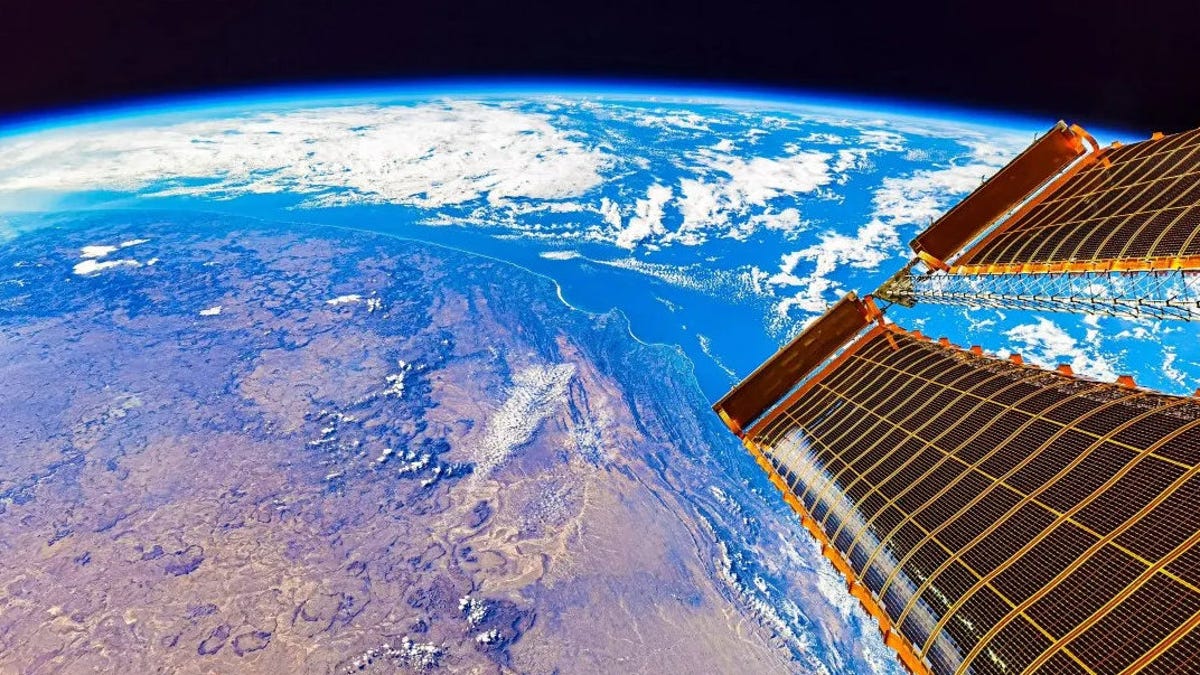China's space station has had to dodge SpaceX Starlink satellites twice
The country tells the United Nations it had to make evasive maneuvers to avoid Elon Musk's orbiting routers in July and October.

The view of Earth from China's space station.
Elon Musk's growing broadband satellite mega-constellation is getting the wrong kind of international attention. Earlier this month, China filed what amounts to an official complaint with the United Nations over what it says were two close calls between its space station and SpaceX Starlink satellites.
"Starlink satellites launched by Space Exploration Technologies Corporation (SpaceX) of the United States of America have had two close encounters with the China Space Station," China said in the diplomatic note addressed to the UN Secretary-General. "For safety reasons, the China Space Station implemented preventive collision avoidance control on July 1 and October 21, 2021, respectively."
China's description of the second incident suggests there was minimal or no communication with SpaceX:
"As the (Starlink) satellite was continuously maneuvering, the maneuver strategy was unknown and orbital errors were hard to be assessed, there was thus a collision risk between the Starlink-2305 satellite and the China Space Station. To ensure the safety and lives of in-orbit astronauts, the China Space Station performed an evasive maneuver again on the same day to avoid a potential collision between the two spacecraft."
SpaceX didn't immediately respond to a request for comment.
Astronomer and leading orbit watcher Jonathan McDowell said Monday on Twitter that he confirmed that the near misses and evasive maneuvers described by China did take place as described.
I confirmed the Starlink/Chinese Space Station conjunctions on Jul 1 at 1315 UTC (S-1095) and Oct 21 at 2200 UTC (S-2305), with CSS orbit adjustmets at about 0950 UTC Jul 1 and 0316 UTC Oct 21. The Oct passes shown here: pic.twitter.com/DmbIucpRPF
— Jonathan McDowell (@planet4589) December 28, 2021
This is not the first international incident involving a SpaceX satellite. In 2019, a European spacecraft had to perform an evasive maneuver to avoid coming too close to a Starlink satellite. SpaceX cited "a bug in our on-call paging system" that caused a communications breakdown leading to the incident.
There is some irony to the latest news. A 2007 Chinese anti-satellite missile test that destroyed one of the country's own satellites created one of the largest orbital debris clouds to date, leading the International Space Station to perform multiple evasive maneuvers over the years. China has also not condemned a similar destructive Russian test earlier this year that again sent ISS astronauts to take cover in capsules docked with the station.
SpaceX has so far launched almost 1,900 Starlink satellites for its global broadband service and has a license to deploy a constellation made up of over 12,000 satellites.

